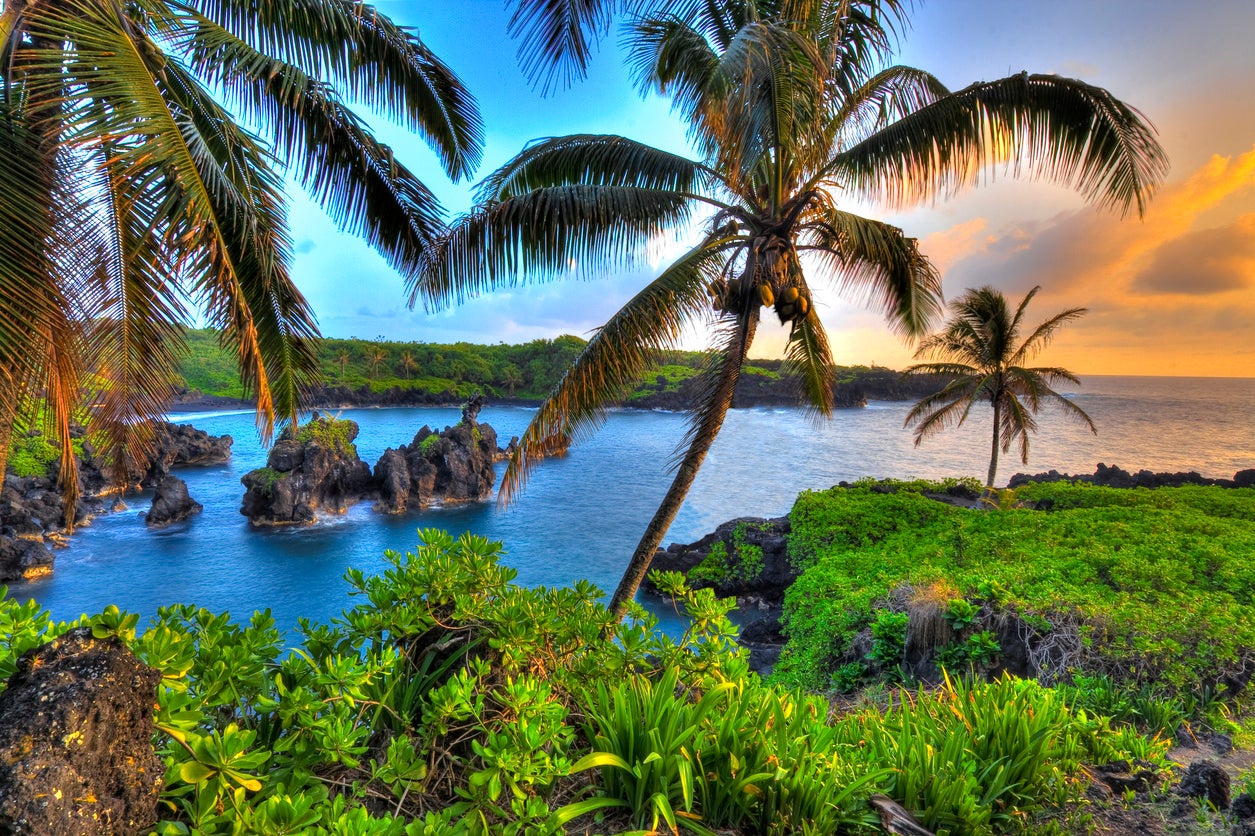The best time to visit Hawaii for a holiday – and how to avoid the rain
Whether you’re going for tropical rainforest or sandy coast, here’s our guide to getting the best Hawaiian weather

An eclectic mix of US and Polynesian influences, Hawaii is a destination unlike any other.
When most think of the States, they don’t picture tropical rainforest, turquoise waters, rolling green hills and the white sands of some of the best beaches in the world, but all this and more awaits in the archipelago that is the country’s 50th state.
These volcanic islands sit in the central area of the Pacific Ocean, just below the Tropic of Cancer and over 2,000 miles from the mainland, meaning that they have drastically different weather conditions to the rest of the country, with a mainly tropical climate; though there is some variation throughout the islands.
This means that Hawaii only has two separate seasons; summer and winter. Average temperatures remain high even in winter, with an average daytime temperatures as high as 25C at sea level, but rainfall in one area can be as high as 11,000mm. So when should you visit? Here’s everything you need to know.
Read more on USA travel:
Wet Season
When is it? November to March
The wet season coincides with ‘winter’ on the islands. Levels of rainfall vary dramatically depending on area, which is usually dependent on moist trade winds that are forced upslope by the mountains – the area around Mount Waialeale, on the island of Kauai, is one of the wettest places on Earth, with an average annual rainfall of roughly 11,430mm.
The heaviest storms come during these months, and even relatively dry areas can receive over half their average rainfall in a day or so. Overall, rainfall is lowest on the islands of Lanai and Molokai, but it is also very low on the leeward sections (part of the island that faces away from prevailing winds, in this case the west) of Big Island, Oahu and Maui. Here, the average is anywhere between 250mm and 740mm per year. It is highest in the east of Big Island and Maui, with up to between 6,400mm and 11,400mm on average, but weather is very localised. On average, the wettest months are November and December.
Dry Season
When is it? April to October
While even winter has some warm temperatures, the ‘dry season’ (summer) brings with it warmer weather and less rainfall. With clear skies, gentle breezes and average highs between 29 and 32 during these months, the islands are unlikely to get sweltering, instead providing the perfect weather for sunbathing, swimming and exploring the islands’ varied landscapes. July and August are the hottest months, where average temperatures can hover around 27C and you’ll likely receive around 11 hours of sunshine per day. Unsurprisingly, these months also attract the most visitors, although December is another of the busiest months on the islands despite the weather.
Best time to go
While the weather isn’t as optimal in the winter months, it is still better than much of the rest of the US, so winter in Hawaii can be very busy (and prices rise accordingly). This is the same for the driest islands – Molokai and Lanai – as good weather in winter draws large crowds from the mainland. The peak of summer is also very popular and similarly expensive, as well as bringing hot and humid temperatures.
Instead, stick to shoulder months such as April, May, June and September to find great weather, lower prices and a better range of accommodation options. June and September are best if you want to make the most of exploring, as even the mountainous areas will be comparatively dry. Average temperatures in these months sit at around 26C, while average rainfall is low at between 40mm and 60mm. You can also expect 10 to 11 hours of sunshine per day, providing ideal conditions whether you’re strolling the streets of Honolulu or lying on the white sands of Maui.
January
Average temperature: 23C
Hours of sunshine per day: 8 hours
Average monthly rainfall: 78 mm
Relative humidity: 74 per cent
February
Average temperature: 23C
Hours of sunshine per day: 8 hours
Average monthly rainfall: 90 mm
Relative humidity: 64 per cent
March
Average temperature: 24C
Hours of sunshine per day: 9 hours
Average monthly rainfall: 88 mm
Relative humidity: 69 per cent
April
Average temperature: 24C
Hours of sunshine per day: 9 hours
Average monthly rainfall: 52 mm
Relative humidity: 67 per cent
May
Average temperature: 25C
Hours of sunshine per day: 11 hours
Average monthly rainfall: 38mm
Relative humidity: 66 per cent
June
Average temperature: 26C
Hours of sunshine per day: 11 hours
Average monthly rainfall: 43mm
Relative humidity: 64 per cent
July
Average temperature: 26C
Hours of sunshine per day: 11 hours
Average monthly rainfall: 57mm
Relative humidity: 65 per cent
August
Average temperature: 27C
Hours of sunshine per day: 10 hours
Average monthly rainfall: 34mm
Relative humidity: 66 per cent
September
Average temperature: 27C
Hours of sunshine per day: 10 hours
Average monthly rainfall: 61mm
Relative humidity: 65 per cent
October
Average temperature: 26C
Hours of sunshine per day: 9 hours
Average monthly rainfall: 80mm
Relative humidity: 67 per cent
November
Average temperature: 25C
Hours of sunshine per day: 9 hours
Average monthly rainfall: 124mm
Relative humidity: 71 per cent
December
Average temperature: 24C
Hours of sunshine per day: 8 hours
Average monthly rainfall: 87mm
Relative humidity: 73 per cent
Read our reviews of the best USA hotels
Subscribe to Independent Premium to bookmark this article
Want to bookmark your favourite articles and stories to read or reference later? Start your Independent Premium subscription today.

Join our commenting forum
Join thought-provoking conversations, follow other Independent readers and see their replies